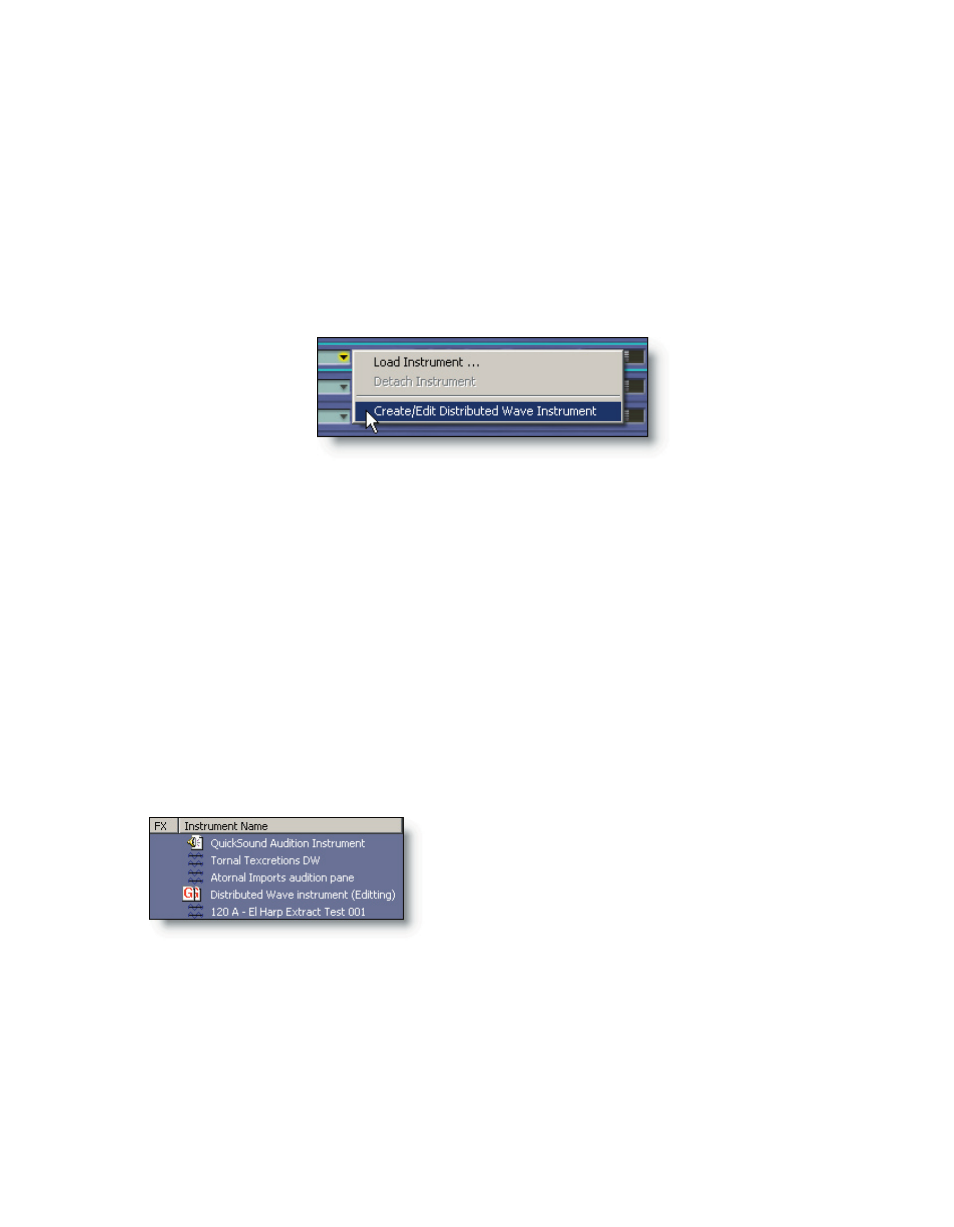Tutorial 9 - distributed wave – Teac GigaStudio 3 User Manual
Page 141

141
Tutorial 9 - Distributed Wave
GigaStudio 3.0 has a powerful tool to work with wave files connected to any storage
device and combine them into a .Gig instrument. Wave files created by the Capture Tool
can be directly loaded to the Distributed Wave editor making them accessible for im-
mediate use.
To begin creating a Distributed Wave instrument, launch a Distributed Wave editor
utility on a MIDI port channel slot. Use the drop-down menu on any port channel slot
and select the “Create/Edit Distributed Wave Instrument” option.
The Distributed Wave Editor has three work areas to deal with loading, sorting, and
creating instruments from combined wave files as well as extracting waves from .Gigs
and exporting waves to .Gigs. We will focus on the top two work spaces for now, the Dis-
tributed Wave Instrument area and the Audition Panel. We will save the Recent Waves
Captures area for later.
Notice that the instrument we opened on the MIDI port channel created a stacked
instrument. These two instruments are “wired” to play in a mutually exclusive
manner.There are actually two instruments in the DWE. There is the Distributed Wave
Instrument at the top and below it the Audition Panel. Each section has its own channel
strip in the stacked instrument on the MIDI Mixer. Only one of these instruments sec-
tions can be audible at a time, its the section that is currently selected in the DWE. You
can see that one of the two stacked instruments will always be muted when the other
is selected and played in the Distributed Wave instrument window.
A new Distributed Wave Instrument is also
added to the loaded instruments list in the Quick-
Sound loader window. It is a stacked instrument so
its icon reflects that, and it is in “editing” status.
Using the skills you have learned from using QuickSound for finding and auditioning
sounds in the QuickSound loader window, you can quickly find waves for import, espe-
cially if you remembered to add keywords to your waves.
You can also quickly load any recently captured audio wave files. Using the capture
tool to create your own wave files and integrating them together into a collection that
is mapped across the keyboard is an excellent use of Distributed Wave.